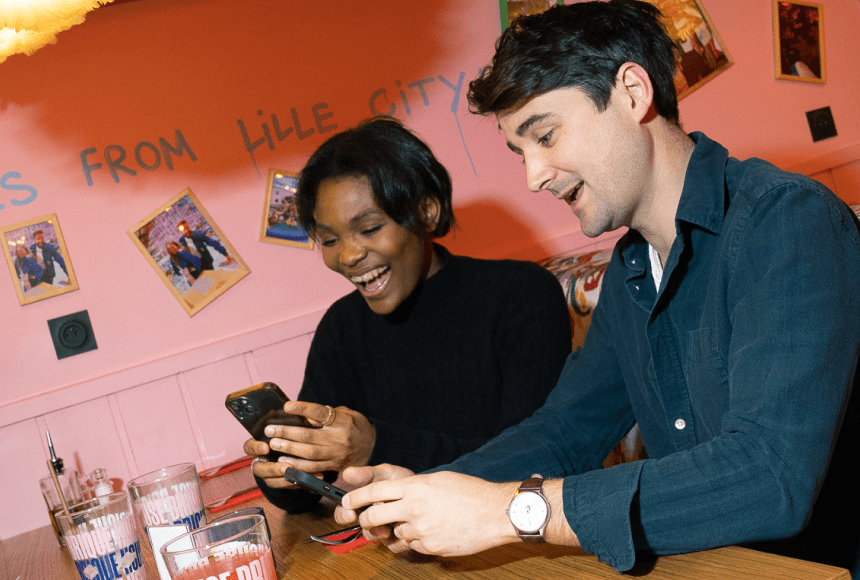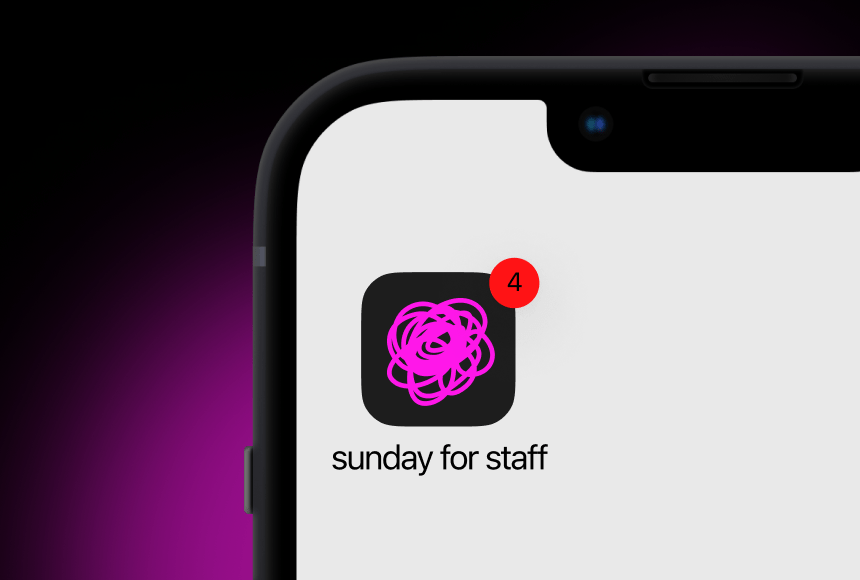
Transforming Dining with QR Codes: A Game-Changer for Restaurants
A Shift Toward Digital Convenience
In an age where smartphones handle everything from grocery shopping to buying train tickets, it’s no surprise that UK diners now expect digital solutions at every turn—especially when it comes to paying the bill. Gone are the days of fumbling with coins or waiting ages for a card machine. Instead, restaurants across the country are embracing QR code payments to offer a sleek, frictionless experience.
According to UK Finance, contactless transactions have surged in popularity, driven by changing consumer habits and a desire for speed and safety. QR payments take that concept further. With a quick scan, guests can settle up on their phone, tip generously, and even leave feedback in one seamless flow. Below, we’ll explore how this technology reshapes the customer journey—from arrival to departure—and what it means for you as a restaurateur.
1. Speed and Ease: A Welcomed Relief for Diners
Picture the moment after a long meal. Guests are chatting, satisfied, but someone glances at their watch. They’re ready to move on. In the past, they’d wave down a server or queue at the bar to pay. Now, with QR code payments, the process is in their hands:
- Instant Access: A quick scan on their phone reveals their total bill—no need for paper receipts or for staff to fetch a terminal.
- Familiar Digital Wallets: Whether they prefer Apple Pay, Google Pay, or a card on file, they can finalise everything swiftly.
- Less Time Wasted: No more juggling receipts, filling out tip lines, or re-entering amounts. A few taps and it’s done.
This convenience builds positive final impressions, prompting many diners to see your restaurant as efficient and considerate. Time-strapped urbanites, in particular, love skipping the chore of flagging staff just for the bill. It’s a subtle change that can leave a lasting impact on how they recall their visit.
2. Encouraging Generous Tipping with Subtle Prompts
The UK’s tipping culture can sometimes be hit-or-miss, but QR code payments can nudge diners toward more consistent gratuities. The payment screen often includes tip suggestions—say 10%, 12.5%, or 15%. This offers gentle encouragement and removes guesswork:
- No Loose Change Stress: Diners simply tap a tip amount. That convenience often pushes them toward a slightly higher percentage.
- Clear Ranges: People unsure about tipping norms can follow the automated prompt without feeling pressured or clueless.
- Rewarding Staff: Servers see an uptick in gratuities, boosting morale and service quality in the long run.
When staff get reliably higher tips thanks to the straightforward checkout process, their motivation often soars—and a more enthusiastic team creates a better guest experience. Everyone wins.
3. Freeing Staff for Genuine Interaction
Payment tasks can hijack a surprising chunk of a server’s day—collecting bills, manually splitting checks, waiting for card machines to connect. By handing over control to diners via QR codes, your team gains extra time to do what they do best:
- Attentive Service: Instead of dealing with repetitive checkout tasks, staff focus on welcoming new arrivals, recommending specials, or checking on existing tables.
- Smoother Table Turnover: With less friction at billing, guests depart promptly, allowing staff to reset tables and seat the next party without delays.
- Reduced Errors: Fewer manual entries mean lower risk of a server mis-typing a total or mixing up which diner paid. Less confusion, happier customers.
Diners notice when servers are present and engaged, rather than buried in admin tasks. That small improvement can transform an average meal into a memorable outing—one they’ll recall fondly next time they’re picking a place to eat.
4. Integrating Offers and Loyalty Right on the Phone
A big advantage of QR code payments is the potential to merge loyalty programmes, promotional offers, and even reviews into one frictionless process. Imagine: a diner scans to pay, sees a discount on dessert for their next visit, or accumulates points that’ll save them money down the line.
- Real-Time Prompts: If your app or platform detects a repeat customer, it could serve up a targeted offer—like 20% off wine for loyal patrons.
- Reviews in a Tap: Tools like sunday can automatically prompt a Google review after payment. No separate sign-up or URLs needed. The simpler it is, the more likely they’ll share positive feedback.
- Cross-Channel Consistency: If a customer also orders takeaway, the same loyalty or discount system applies. They recognise the continuity, building trust in your brand.
These add-ons help diners feel valued and encourage them to return, growing your fan base organically. An effortless synergy of payment and marketing fosters deeper engagement with minimal extra effort from your staff.
5. Minimising Contact Points for Health-Conscious Customers
Even as life returns to a post-pandemic norm, many diners still prefer minimal physical contact. QR code payments let them handle everything on their own device:
- Private Screen, Private Payment: Guests don’t have to pass a card around or tap a communal terminal. They control the entire transaction from start to finish.
- Less Paper Waste: No receipts piling up or cluttering the table. Many solutions email or text a digital record, appealing to eco-friendly diners.
- Clean, Modern Aesthetic: Fewer machines or paper menus lying about create a more streamlined, visually appealing environment.
With germ-consciousness still a lingering concern, emphasising your contactless approach can reassure customers that you care about their well-being, further cementing loyalty in a competitive market.
6. Gathering Valuable Feedback and Data
A traditional card swipe rarely gives restaurants any insights beyond the transaction. But with QR code payments, you can easily capture extra data—like dish popularity, peak order times, or how many customers opted for an upsell. That knowledge can guide decisions, whether it’s tweaking your menu or refining staff schedules:
- Identifying Hit Dishes: If you see that your new vegan lasagne is selling like hotcakes, you can push it more or create similar items.
- Tracking Conversion Rates: Notice how often customers respond to a dessert upsell or discounted cocktail prompt. Refine these offers for maximum success.
- Spotting Diner Patterns: Daypart usage and busiest seatings become crystal clear. Roster staff effectively or plan promotions at quieter times to drive traffic.
Data-driven decisions help you run a smarter restaurant. QR payments thus become a gateway to more refined strategies, all while offering a better customer journey.
7. Unifying Multiple Ordering Channels
Many restaurants juggle in-house dining, takeaway, and perhaps even local deliveries. QR code payments can unify these streams, especially if they link to a central POS. That synergy means:
- Seamless Stock Sync: If an item sells out in-house, it’s instantly removed from the online menu. No awkward phone calls informing customers their dish is unavailable.
- Consolidated Data: Whether someone orders a latte at the counter, uses your QR code at a table, or taps to pay for a takeaway, all sales sync up for consistent accounting.
- Cross-Promotion Opportunities: Diners scanning for a quick coffee might discover your upcoming weekend brunch event or a limited-time offer on pastries.
This convergence helps restaurants maintain accurate menus, track real-time availability, and gather a single source of truth for finances—smarter ops all around.
8. Boosting Brand Image with Modern Tech
Let’s face it: diners often judge a restaurant’s vibe not just by the food, but also the ease of the overall experience. Embracing QR code payments signals an up-to-date approach that resonates with those used to quick, digital solutions:
- Minimalistic Design: A small QR code on the table is less obtrusive than large card terminals or signage clutter. It projects a crisp, modern aesthetic.
- Tech-Savvy Reputation: Younger diners, in particular, love seeing their favourite cafés or restaurants adopting simple app solutions. It feels fresh and efficient.
- Eco-Friendly Perception: With digital receipts and fewer paper menus, you reduce waste. Some diners appreciate the smaller carbon footprint.
In an increasingly digital world, standing out with convenient, forward-thinking solutions can shape how customers speak about your place—especially online, where references to your “high-tech touch” might influence prospective visitors.
9. Simplifying the Payment Journey with sunday
If you’re looking for a straightforward way to introduce QR code payments, platforms like sunday can streamline the process. Once guests scan their table’s unique code, they can view their bill, tip the staff, and pay in seconds. The benefits extend across the entire venue:
- Faster Settlements: The restaurant sees immediate confirmation, freeing tables for new guests. Smooth turnover equals higher revenue.
- Staff Freed for Service: Rather than running card machines, servers can greet arrivals, upsell drinks, or chat about specials. Their energy stays on hospitality, not admin.
- Prompt Reviews: After payment, the system might nudge diners to leave a quick star rating or Google review, capturing fresh impressions for your brand’s online presence.
Implementing QR codes doesn’t require tearing up your existing system. In many cases, you can add a quick layer on top of your usual POS—making the rollout painless for everyone.
10. Paving the Way for a Future-Ready Restaurant
As the UK’s dining culture evolves, speed and convenience are poised to shape tomorrow’s biggest winners. QR payments aren’t just an intriguing novelty—they’re fast becoming the norm. Big names and local independents alike see the upside: quicker bills, easier tipping, tidier data, and an enhanced customer experience that cements loyalty.
- Expanding Digital Ecosystems: By next year, customers may expect more integration between apps, loyalty perks, and instant ordering. QR codes can be the gateway to all these features.
- Adapting to Trends: According to a recent Statista report, the demand for contactless and mobile payments grows yearly. Restaurants that stand still risk missing out on revenue and relevance.
- Ongoing Innovation: With augmented reality menus or interactive feedback prompts, the humble QR code could soon do even more than just process payments.
By offering a frictionless path for diners to settle up—anytime, anywhere—you position your venue as forward-thinking and guest-centric. And in a sector where experiences matter as much as flavours, that can be a powerful differentiator.
Looking Toward the Next Wave of Dining
QR code payments signal a broader movement toward streamlined, tech-driven solutions in hospitality. They cater to customers’ desire for autonomy, speed, and clarity, while freeing staff to concentrate on the finer points of great service. Tables turn faster, tips rise, and that last impression—often the one that lingers—feels smooth and professionally handled.
If you’ve been weighing whether to introduce a modernised payment flow, these advantages speak volumes: higher diner satisfaction, less staff stress, more consistent revenue, and a brand image that resonates with a digital-savvy public. Whether you run a city-centre brasserie or a suburban family restaurant, adopting QR payments can refine how you handle everything from taking orders to prompting those crucial online reviews.
Forward-thinking solutions like sunday make it easier than ever to implement a QR-based system. Simple signage on each table, a bit of staff training, and you’re ready to greet guests with a fresh, convenient payment experience. The question isn’t whether the dining world is shifting to QR codes, but rather how soon you’ll reap the benefits of jumping on board. After all, in a competitive climate, every second saved at the table is another chance to delight—and keep your customers coming back for more.
Find out more today
Drop us your details below and we’ll reach out within the next 24
“Bill please” is a thing of the past.
With our integrated QR codes your customers pay in seconds, straight from their table.




